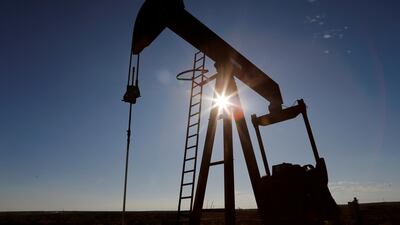In the middle of the third quarter, investors momentarily shrugged off coronavirus fears and bumped up crude oil prices after being encouraged by rising demand from Asia.
Brent crude spot prices flirted with $46 per barrel on August 12 as Saudi Aramco said it saw demand for oil in Asian markets reach pre-pandemic levels.
However, several ifs and buts persist as the pandemic wears on the global economy.
Signs of a resurgence of Covid-19 infections in Europe cloud the outlook for global crude oil prices. The UK re-imposed quarantine restrictions on travellers from France, Spain, the Netherlands and Malta. Meanwhile, popular tourist destination Greece is struggling with a second wave of coronavirus infections.
Other regions can expect similar patterns as we move towards the fourth quarter. Asian countries face economic challenges stemming from Covid-19.
Japan went through its worst economic contraction on record during the second quarter. This will weigh on investment in industry – a key sector for oil demand. In another example, Thailand’s second-quarter gross domestic product contracted by 12 per cent year-on-year, according to economists.
The GCC faces strong economic headwinds, mainly from declining global growth, low oil prices and a rise in national debt due to Covid-19 fiscal stimulus. Saudi Arabia saw a drop of 15.5 per cent in industrial production and the lockdown negatively affected non-oil GDP, according to an August report from Opec. The UAE’s non-oil economy depends on the recovery in the global economy, Opec added.
The twin threats of a second wave of Covid-19 combined with economic contraction could heavily affect demand for jet fuel and oil used in industry during the fourth quarter. Ryanair preemptively cut 20 per cent of its flights in Europe during September and October because of the rise in coronavirus cases combined with quarantine restrictions.
The US Energy Information Administration points to signs of weakness in oil demand until the end of the year, according to its August report. Liquid fuel consumption in the US was down by 20 per cent year-on-year in the second quarter and inventories remain high. The EIA does not expect fuel demand to recover until 2021 and lowered its estimate of US oil production in 2020 to an average of 11.3 million barrels per day, a drop of 370,000 bpd.
Opec notes in its August report that spot crude oil prices rose in July in the third consecutive monthly increase, averaging $43.42 per barrel. It points to other bright spots such as the global manufacturing Purchasing Manager’s Index which rose to 50.3 in July from 47.9 in June. The global services PMI also showed a recovery, rising to 50.3 in July from 48 in June.
However, Opec warns that growth in the world economy may decline by 4 per cent in 2020, while global oil demand growth could fall by 9.1m bpd for the year. Opec revised down its full-year estimate for crude oil production to 23.4m bpd or 5.9m bpd lower than last year, as of the time of writing.
The impact of Covid-19 on oil demand will not end in 2020, according to Opec’s August estimate. The group lowered its estimate for oil demand in 2021 down to 29.3m bpd, a drop of 0.5m bpd compared with July’s estimate.
Nonetheless, Opec is more optimistic about 2021. Global economic growth may reach 4 per cent, driven by recoveries in Asia and the US. Promising developments in the search for a Covid-19 vaccine would boost the probability that things will improve next year. If this scenario comes true, then oil demand would recover in line with expectations and potentially exceed expectations as people catch up on travels they missed.
For now, short-term uncertainty remains the prevailing driver for oil prices.
Crude oil prices may recover in 2021 along with the global economy. If the global manufacturing and services sectors keep improving, it would help investor sentiment. Once the summer holidays are over and the markets go back to work, spot oil prices might follow a pattern of small rises followed by profit-taking. However, investors are likely to feel primarily cautious and react nervously to negative developments connected with a second wave of Covid-19.
Hussein Sayed is the chief market strategist at FXTM

